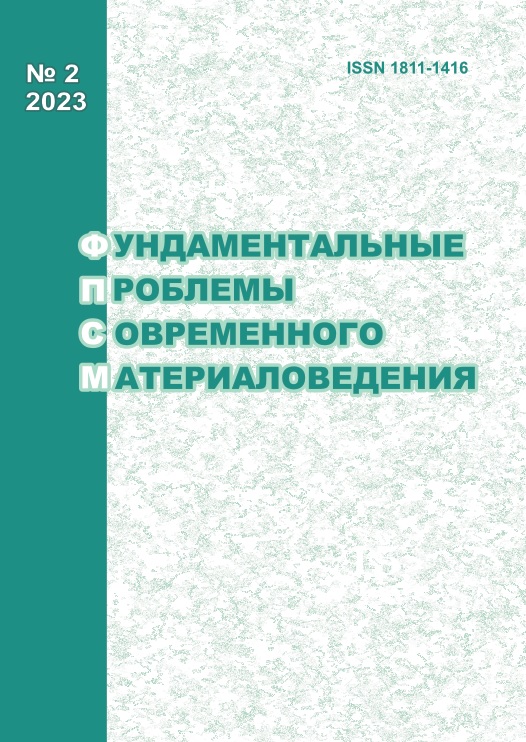INVESTIGATION OF THE HEAT TREATMENT EFFECT ON THE ALLOYS OF Al–Mg–Si SYSTEM WITH AN EXCESS OF SILICON ALLOYED WITH SMALL SCANDIUM-ZIRCONIUM ADDITIVES
10.25712/ASTU.1811-1416.2023.02.014
Keywords:
aluminum alloy, heat treatment, nanoparticles, transmission microscopyAbstract
This article is devoted to the investigation of the heat treatment effect on the physical and mechanical properties as well as intermetallic particles in Al–Mg–Si alloys with small scandium-zirconium additives and an excess of silicon. The samples were cast and subjected to heat treatment in the temperature range 360-440 °C, holding time in the range from 10 second to 50 hours. After heat treatment, the alloys were examined using scanning and transmission microscopy; their microhardness and electrical conductivity were also determined. The studies made it possible to establish that (AlSi)3Sc nanoparticles are formed in all alloys during annealing. However, in the alloys with a lower content of scandium (0.05 %), these particles appear at later stages of heat treatment as a result of continuous decomposition of a supersaturated solid solution. Scandium in these alloys at the initial stages of heat treatment is located in the supersaturated solid solution, which allows continuous decomposition to occur. At the same time, in alloys with a scandium content of 0.3 %, (AlSi)3Sc particles appear immediately after casting, and during subsequent annealing they only increase in size. Some of these particles have an elongated needle shape, some are converted into large equilibrium AlSi2Sc2 losing their coherence, and only a part of them exists in the nanodispersed form. In addition, large scandium-containing particles were found in these alloys. These particles were formed during crystallization seizing scandium from the supersaturated solid solution and interfering with the continuous precipitation of (AlSi)3Sc. A drop in microhardness is observed at the beginning of annealing. It apparently occurs as a result of the transition of the strengthening part β’’(Mg5Si6), formed during inevitable natural aging, into the Mg2Si phase. In general, the temperature of 440 °C is more favorable for annealing, which can be explained by the effect of zirconium heat-stabilizing nanoparticles (AlSi)3Sc.











 Journal «Fundamental’nye problemy sovremennogo materialovedenia / Basic Problems of Material Science»
Journal «Fundamental’nye problemy sovremennogo materialovedenia / Basic Problems of Material Science» This work is licensed under a
This work is licensed under a 
